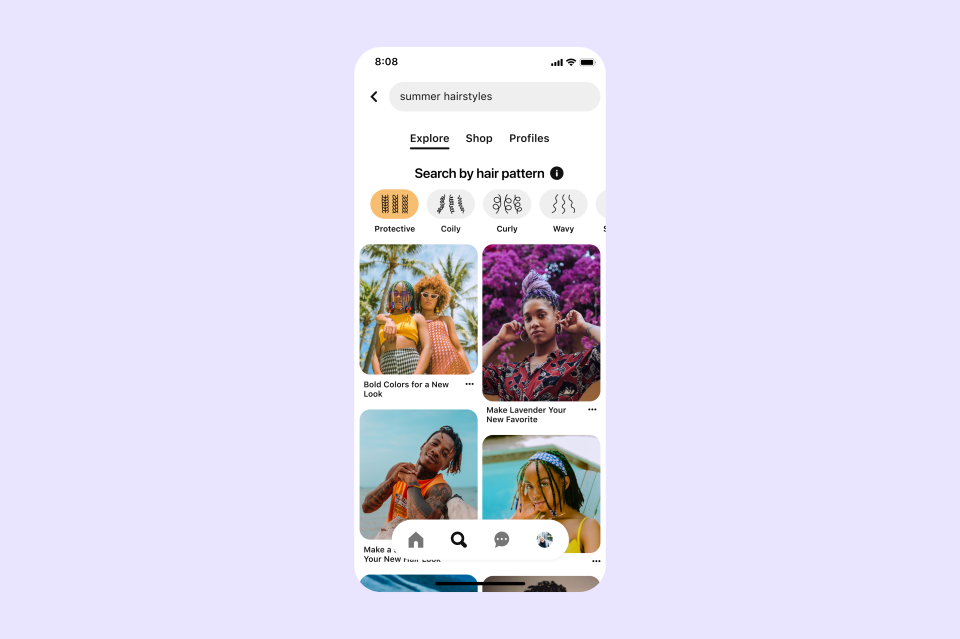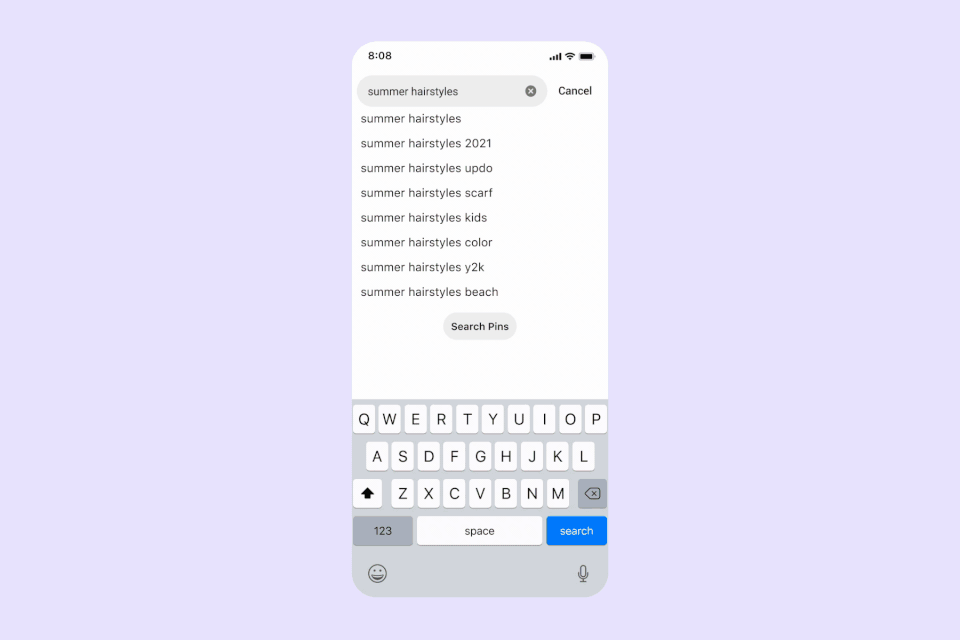Pinterest’s Latest Inclusive Beauty Feature: Hair Pattern Searches

To help further the cause of beauty inclusivity, Pinterest revealed a new computer vision-enabled hair pattern search tool on Tuesday that was created with people of color in mind, according to the company.
The feature, effectively a filter for beauty searches, distinguishes and sorts results according to six different hair patterns: protective, coily, curly, wavy, straight and shaved/bald. So people can start with a broad search term like “glam hair” or “summer hair” and then drill down into textures or types to unearth relevant content, instead of picking through a massive pile of divergent images.
More from WWD
Pinterest said it has detected hair patterns in more than 500 million images in its platform so far.

Courtesy image
To develop the tool, Annie Ta, the company’s head of inclusive product, told WWD that she consulted with BIPOC creators [Black, Indigenous, People of Color] and “pinners” such as Naeemah LaFond, editorial hairstylist and global artistic director of Amika.
“She collaborated with us to help us understand how to define different hair patterns, as well as worked with us to define how people might search for these things on Pinterest,” said Ta.
Hair pattern can be a very personal issue for people, she explained, so the company set out to look at how technology can help users find more customizable results.
“What we ended up doing was, we built a signal using artificial intelligence, intelligence and computer vision technology that allowed us to visually identify a hair pattern in an image,” she explained. “And that enables us to let people sort their searches on Pinterest by all these different hair patterns.”
The tool is a progression from Pinterest’s skin tone ranges, a beauty search filter that can detect and sort results by skin tones. Rolled out in 2019, it has grown five times in the last year alone, Ta said, and its success has led her team to consider more deeply what online representation means and how it should inform future Pinterest features.

Courtesy photo
“With the success of skin tone ranges, we wanted to help ‘pinners’ find more relevant beauty ideas,” she added. “So we explored this very specifically for hair. And we repeatedly heard from BIPOC folks that hair inspiration on Pinterest was harder to find and that we should allow people to search by different hair patterns.”
In that way, hair pattern search is a user-driven development, not a means to drive revenue, as there are no advertising products available for it. But that could change over time, just as skin tone ranges now includes some shoppable results.
Either way, people who struggle to see themselves in beauty searches may find skin tone ranges and hair pattern search filters helpful. While they may not be a cure for beauty’s inequality problem, they look like steps in the right direction.

Courtesy image
And for Pinterest at least, that journey continues. In addition to its work on inclusive features, the company made a new goal last year to ensure that 50 percent of the managed creators it works with come from underrepresented groups.
“We believe that increasing representation on Pinterest — because we are a visual platform — is a huge opportunity for us,” Ta added. “We also believe it to be a responsibility. So our approach to building inclusive products is to build experiences that really put BIPOC folks at the center of our product decisions.”
Sign up for WWD's Newsletter. For the latest news, follow us on Twitter, Facebook, and Instagram.

